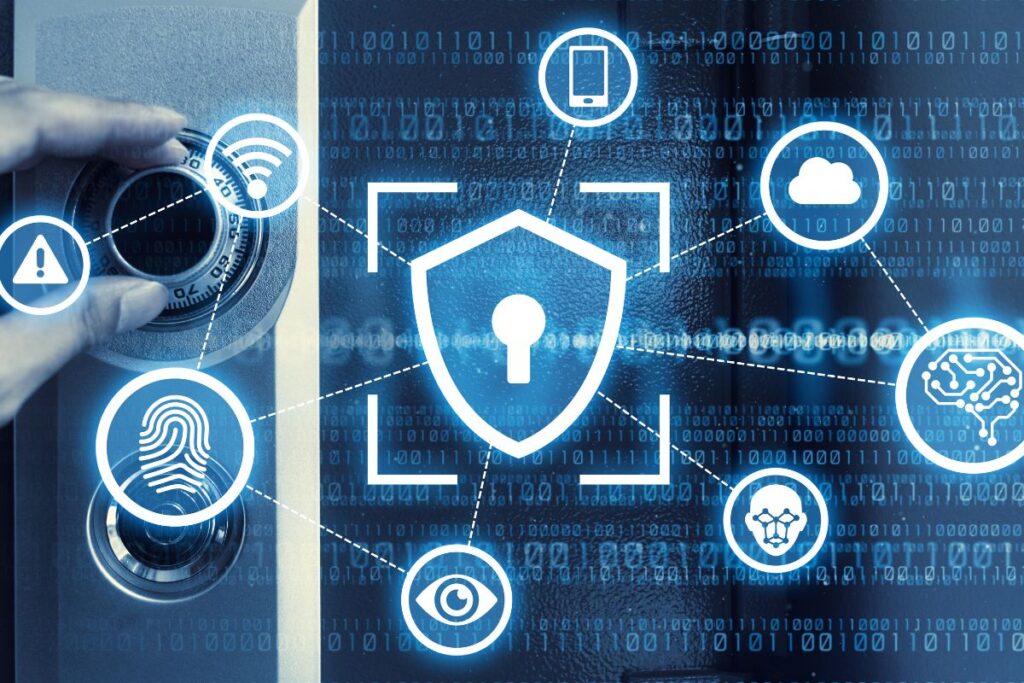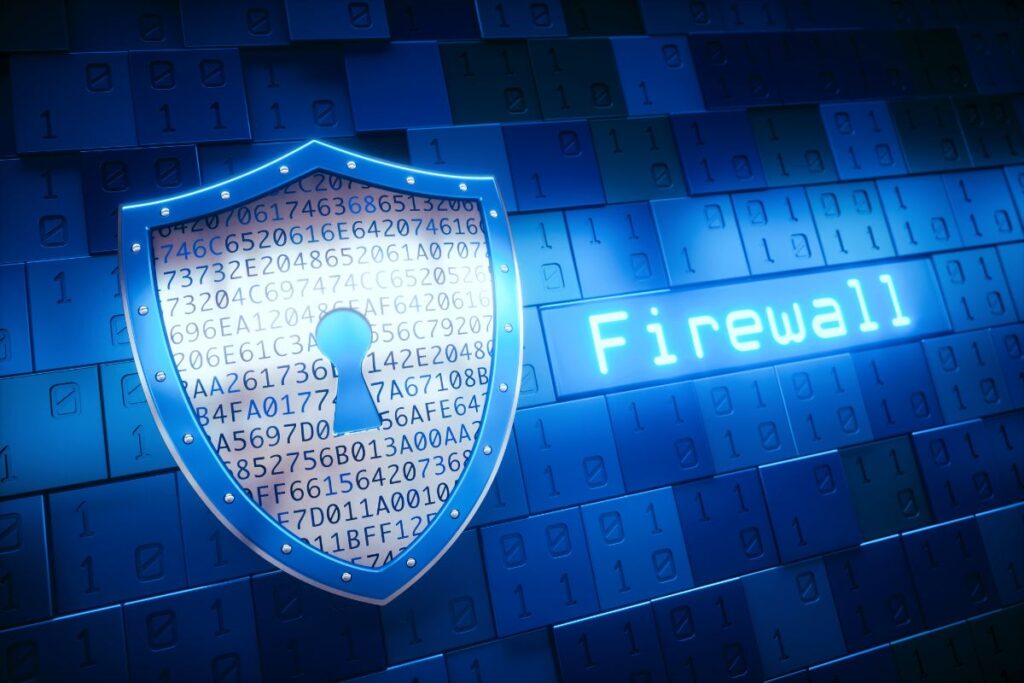The Rising Need for Business Cybersecurity in the Digital Age
In today’s hyper-connected world, businesses operate in an environment where digital systems are integral to daily operations. From online transactions to cloud storage and remote working setups, everything is connected—and that means everything is vulnerable. Cyberattacks aren’t just rare occurrences anymore; they are daily threats that companies must be prepared for. Think about it: would you leave your storefront unlocked overnight? No? Then why leave your network unprotected?
Business Cybersecurity solutions have moved from being a techy add-on to a mission-critical investment. Businesses today understand that one successful attack can lead to data loss, financial ruin, and severe reputational damage. The need for comprehensive, up-to-date cybersecurity isn’t just a matter of convenience—it’s a survival strategy. The digital age has brought great convenience, but it has also opened the door to a whole new class of threats. From ransomware to phishing, businesses now face attacks that are more sophisticated than ever before.
This transformation in thinking—from reactive to proactive cybersecurity—marks a significant shift. Companies are no longer waiting for breaches to happen. They’re actively investing in technologies that predict, prevent, and mitigate risks before they escalate. In essence, business cybersecurity is no longer optional; it’s essential.
Understanding the Threat Landscape for Modern Businesses
The threat landscape has expanded drastically over the past decade. Today, cyber threats are not just about lone hackers; they’re about organized crime rings, state-sponsored attacks, and insider threats. Businesses face threats from all angles—malicious software, data breaches, espionage, and even disgruntled employees. Each type of attack comes with its own set of risks and consequences, and ignoring them can cost companies millions.
Let’s break it down. There are threats like ransomware, which locks your data and demands payment to unlock it. Then you’ve got phishing emails that trick employees into giving away credentials. Add to that malware, spyware, denial-of-service attacks, and it’s clear that businesses must be on high alert 24/7. And the worst part? These threats evolve constantly.
But it’s not all doom and gloom. Understanding this ever-shifting landscape is the first step toward building a strong defense. Businesses need to stay informed, agile, and ready to adapt. That means constantly assessing risks, updating systems, and training employees.
The takeaway? Cybersecurity is not a one-and-done deal. It’s a dynamic, ongoing process that requires vigilance and strategic planning.
Core Components of Business Cybersecurity Solutions

Network Security Measures
Network security forms the backbone of any business cybersecurity solution. It ensures that your internal systems and communications remain protected from unauthorized access. Think of it as the digital version of a moat around your business’s castle. Without it, hackers can easily waltz in and take what they want.
Firewalls, virtual private networks (VPNs), and intrusion detection systems are critical tools in maintaining network security. Firewalls monitor and control incoming and outgoing network traffic based on predetermined security rules. VPNs encrypt your internet connection, protecting your data from snoopers, especially on public Wi-Fi networks. Intrusion detection systems act like surveillance cameras, watching for suspicious activity and alerting you before things get out of hand.
Moreover, segmentation of networks can also prevent the lateral movement of attackers within a business system. For instance, even if a cybercriminal breaches one part of the network, segmented architecture keeps them from accessing sensitive areas like financial records or HR databases.
Today, many businesses also use automated network security monitoring tools. These systems analyze traffic patterns in real-time and raise alarms when anomalies are detected. With artificial intelligence and machine learning integrated into network security, the detection and response to threats have become faster and more accurate.
Endpoint Protection Solutions
Every laptop, desktop, mobile phone, or smart device connected to a company’s network is a potential entry point for attackers. These devices—known as endpoints—are often targeted by malware, ransomware, or phishing attacks because they’re usually the weakest link in the security chain. This is where endpoint protection solutions come into play.
Endpoint protection platforms (EPPs) include antivirus software, anti-malware tools, and device management policies that secure endpoints from both external and internal threats. Today’s EPPs go beyond just scanning files; they offer behavior monitoring, application control, and encryption to ensure maximum security.
Advanced endpoint detection and response (EDR) solutions are also gaining popularity. These tools provide continuous monitoring and analysis, allowing businesses to detect and respond to threats in real-time. They don’t just block malicious activity—they learn from it and adapt.
With remote work becoming the norm, endpoint security is more critical than ever. Companies must ensure that every device accessing their data is secure, no matter where it’s being used. That means enforcing strict security protocols, regularly updating software, and educating employees about potential risks.
Data Encryption and Privacy Tools
Data encryption is like putting your most valuable business information in a high-tech vault. Even if someone manages to breach your system, they won’t be able to read the data without the encryption key. That’s the kind of protection encryption offers—it turns readable information into gibberish for unauthorized eyes.
There are two main types of encryption businesses use: symmetric (same key for encryption and decryption) and asymmetric (different keys for encryption and decryption). Both have their own use cases, but the end goal is the same—protect sensitive data like customer records, financial transactions, and proprietary information from falling into the wrong hands.
Privacy tools go hand in hand with encryption. They include things like data masking, tokenization, and secure file sharing services. These tools ensure that only authorized users can access certain types of data, especially when it’s being stored or transmitted.
In an era where data breaches are not just financial liabilities but PR disasters, encryption isn’t optional—it’s the law. Regulations like GDPR, HIPAA, and CCPA mandate encryption as part of compliance standards. Businesses that invest in strong encryption and privacy tools aren’t just protecting themselves—they’re building trust with their clients and customers, showing that data protection is a priority.
Firewalls and Intrusion Detection Systems
Firewalls and intrusion detection systems (IDS) are like the security guards and surveillance cameras of your digital office. Firewalls act as gatekeepers, controlling what gets in and out of your network. They block suspicious traffic, prevent unauthorized access, and enforce policies to ensure safe communication across all digital channels.

Intrusion detection systems, on the other hand, are more passive but just as crucial. They continuously monitor the network, looking for unusual activity that could signal a breach. When a potential threat is detected, the IDS triggers alerts, allowing the security team to take immediate action.
There’s also an advanced version called Intrusion Prevention Systems (IPS) that not only detect threats but also block them in real-time. These tools are particularly effective against known threats and can be updated regularly to adapt to new forms of attacks.
The combination of firewalls and IDS/IPS creates a layered security framework. Think of it as locking your doors and windows, installing cameras, and having a guard on duty 24/7. For businesses, this kind of setup is essential for maintaining a secure perimeter around sensitive data and operations.
Benefits of Implementing Business Cybersecurity Solutions
Safeguarding Customer Trust and Brand Reputation
Trust is currency in the digital world. One data breach, and you risk losing not only your customer base but also your reputation. Think of brands that suffered massive attacks—many never fully recovered. Cybersecurity isn’t just a technical necessity; it’s a marketing tool. When customers know their data is safe, they stick around.
Businesses that prioritize business cybersecurity send a clear message: “We care about your data.” That assurance builds loyalty and credibility. Customers are more likely to share personal information or make repeat purchases when they feel protected. And in today’s competitive landscape, that trust can be a huge differentiator.
Cybersecurity also helps businesses avoid the PR nightmare that follows a breach. The cost of damage control—legal fees, settlements, lost business, and negative press—can be astronomical. Proactive business cybersecurity measures prevent that fallout and position the company as a trustworthy, forward-thinking brand.
In an age where brand value is closely tied to customer perception, investing in cybersecurity is like investing in your business’s reputation insurance.
Financial Impact and Risk Mitigation
Let’s talk numbers. The average cost of a data breach in 2023 was over $4 million globally. That’s not chump change. Cyberattacks can result in direct financial losses, including stolen funds, legal penalties, and ransom payments. But the indirect costs—downtime, lost customers, reduced employee productivity—can be even more devastating.

Cybersecurity solutions dramatically reduce these risks. By identifying vulnerabilities, blocking attacks, and minimizing downtime, they help businesses avoid costly consequences. Think of it as paying for insurance: a small cost upfront to prevent a major financial disaster later.
Also, many business cybersecurity solutions offer real-time analytics and reporting. This data helps businesses make informed decisions, allocate resources wisely, and improve their overall risk management strategy. With the right cybersecurity framework in place, businesses are better prepared to handle threats without breaking the bank.
In a world where digital threats can strike any time, smart businesses aren’t asking if they can afford cybersecurity—they’re realizing they can’t afford not to have it.
Regulatory Compliance and Legal Security
Governments around the world are tightening data protection regulations. From Europe’s GDPR to California’s CCPA, businesses are under increasing pressure to protect customer data—or face legal consequences. Failing to comply can lead to hefty fines, lawsuits, and in some cases, criminal charges.
Cybersecurity solutions are designed to help businesses meet these regulations. They include features like data encryption, access controls, audit logs, and incident response plans that align with compliance requirements. Many solutions also provide automated compliance reporting, saving businesses time and reducing human error.
Moreover, having strong business cybersecurity protocols in place demonstrates due diligence. If a breach does occur, showing that the company took reasonable precautions can mitigate legal exposure. It’s like having receipts when you file your taxes—you’re covering your bases in case you get audited.
In short, cybersecurity isn’t just about protecting data—it’s about protecting your business from legal and financial fallout. And in today’s regulatory environment, that protection is non-negotiable.
Integration of Cybersecurity into Business Strategy
Cybersecurity can no longer live in a silo—it must be woven into the fabric of overall business strategy. This means CEOs, CIOs, and even boards of directors need to treat business cybersecurity as a business enabler, not just a technical expense. It’s about aligning security measures with business objectives, so growth and innovation can happen safely.
Consider this: launching a new digital product or entering a new market without considering cybersecurity is like opening a store without insurance. Strategic integration ensures that from product development to customer service, security is considered at every step. This reduces vulnerabilities, protects IP, and enables businesses to move confidently in new directions.
Moreover, business cybersecurity as a strategic priority encourages cross-department collaboration. IT works with HR to prevent insider threats, with marketing to protect customer data, and with finance to ensure compliance. This synergy creates a culture of security that’s embedded in daily operations, not just the IT department’s responsibility.
Companies leading the way in this area are also leveraging cybersecurity as a competitive advantage. They’re using secure-by-design principles to build safer products and services, which not only meet compliance standards but also exceed customer expectations.
The Role of AI and Machine Learning in Modern Business Cybersecurity
Artificial intelligence (AI) and machine learning (ML) are redefining what cybersecurity looks like in the modern age. These technologies are no longer futuristic concepts—they’re vital tools in the fight against cybercrime.
AI and ML-powered systems can analyze vast amounts of data at lightning speed, identifying threats faster and more accurately than any human team could. These tools learn over time, adapting to new threats and predicting potential vulnerabilities before they can be exploited. It’s like having a digital security guard that gets smarter every day.

For example, AI can flag abnormal behavior, such as a user accessing files they typically don’t, or an unusual spike in data downloads—both of which might indicate a breach. Rather than waiting for an alert and responding after the fact, businesses can now stop an attack in its tracks.
Additionally, automation enabled by AI reduces the burden on IT teams. Routine tasks such as patch management, log analysis, and threat hunting can be handled automatically, freeing up teams to focus on higher-level strategy and response planning.
As cyber threats become more sophisticated, so must our defenses—and AI is the front line in this evolution.
Employee Training and Building a Security-Aware Culture
No matter how advanced your business cybersecurity tools are, they can’t protect your business if your people don’t know how to use them—or worse, unknowingly undermine them. Human error remains one of the leading causes of data breaches, which is why employee training is a cornerstone of any robust cybersecurity strategy.
Building a security-aware culture means every employee—from the intern to the executive—understands their role in protecting the organization. It starts with regular training on recognizing phishing emails, managing passwords, and safely handling sensitive data. But it goes further than just checking boxes.
Gamified simulations, phishing drills, and real-life case studies help reinforce training and keep security top of mind. Encouraging a culture where employees feel comfortable reporting suspicious activity without fear of reprimand also creates a proactive environment where threats can be stopped early.
Cybersecurity should be a shared responsibility. When employees are empowered with the knowledge and tools to protect the business, the entire organization becomes more resilient.
Future Trends in Business Cybersecurity
Looking ahead, the business cybersecurity landscape will continue to evolve—and fast. Here are a few key trends businesses should prepare for:
- Zero Trust Architecture – This model assumes no user or system is trustworthy by default, even if they’re inside the network. Zero Trust ensures strict identity verification and access controls at every point, minimizing the risk of internal breaches.
- Cloud Security – As more businesses migrate to cloud infrastructure, securing these environments becomes a top priority. Expect to see continued growth in cloud-native security solutions that offer visibility, compliance, and threat management across multi-cloud ecosystems.
- Cybersecurity Mesh – A decentralized security approach that allows different security services to work together as a cohesive ecosystem. This is particularly useful for businesses with remote teams and distributed infrastructure.
- Biometric Security and Passwordless Authentication – With traditional passwords becoming increasingly vulnerable, businesses are exploring biometrics (like facial recognition and fingerprint scanning) and other forms of passwordless login to enhance security.
- Quantum-Safe Encryption – As quantum computing advances, current encryption standards could become obsolete. Forward-thinking businesses are already exploring encryption methods that can withstand quantum-level attacks.

By staying ahead of these trends, businesses can future-proof their business cybersecurity strategy and maintain a strong defense in an ever-changing digital world.
Conclusion: Business Cybersecurity as a Catalyst for Growth
Business Cybersecurity is no longer just about defense—it’s about empowerment. When done right, it becomes a catalyst for growth, innovation, and long-term success. It gives businesses the confidence to expand into new markets, adopt new technologies, and deliver exceptional customer experiences—securely.
In a world where digital transformation is accelerating, businesses that prioritize business cybersecurity aren’t just surviving—they’re thriving. By investing in the right tools, training their people, and building a culture of security, companies can turn cybersecurity from a challenge into a competitive edge.
